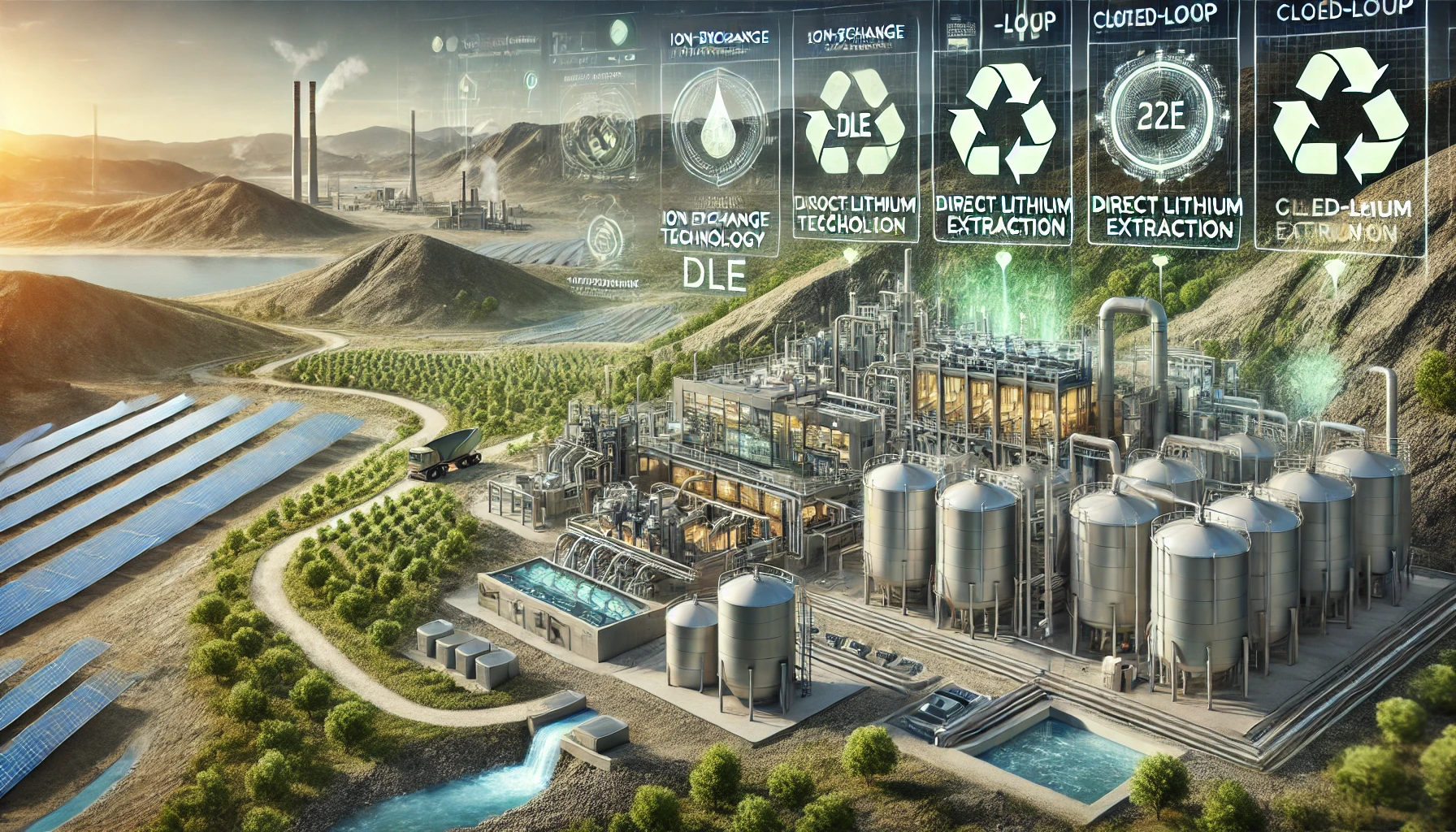Revolutionizing Lithium Extraction: Eco-Friendly Mining Techniques

Introduction: The Urgency of Sustainable Lithium Extraction
With the shift towards sustainable energy, lithium has become indispensable, powering electric vehicles (EVs) and energy storage solutions. Traditional lithium mining, however, has environmental repercussions, including water depletion, pollution, and habitat destruction. This article explores how new startups are leading the way with eco-friendly methods for lithium extraction, crucial for the EV industry and sustainable energy goals. Through innovative solutions and reduced chemical waste, we look at how lithium mining is becoming greener.
Historical Context: The Journey of Lithium Extraction
Lithium extraction began with hard rock mining and salt brine evaporation, both energy-intensive and environmentally taxing processes. Early lithium mines, primarily in the U.S. and Australia, prioritized high yields over ecological concerns. As demand for lithium surged with the advent of electronics and, more recently, electric vehicles, the pressure on mining companies to adopt sustainable methods intensified. The need for an eco-conscious approach has evolved alongside public demand for accountability and environmental responsibility.
Current Challenges in Lithium Mining
The demand for lithium has never been higher, but extraction processes are fraught with challenges. Water scarcity, especially in desert regions, poses a serious issue; the evaporation process used in traditional mining consumes vast amounts of water. Pollution from chemicals used to separate lithium from brine also impacts local ecosystems and communities. Additionally, lithium-rich areas like Chile’s Atacama Desert face severe ecological threats as mining disrupts native flora and fauna. These hurdles underscore the need for sustainable alternatives.
Environmental Impact of Traditional Lithium Mining
Traditional lithium mining processes, like spodumene extraction and brine evaporation, leave a significant environmental footprint. In the 'Lithium Triangle' (Argentina, Chile, and Bolivia), water use for lithium extraction has led to resource scarcity for local agriculture and communities. Spodumene extraction from hard rock mines in Australia produces greenhouse gases and toxic waste, causing long-term soil contamination. Without changes, traditional methods will continue to disrupt ecosystems and contribute to climate change.
Case Study: Lilac Solutions and Ion-Exchange Technology
California-based Lilac Solutions has made headlines by developing ion-exchange technology to extract lithium efficiently with minimal water. Unlike traditional brine evaporation, this approach reduces water use by over 90% while also cutting down extraction time. Lilac’s technology has the potential to address water scarcity issues in lithium-rich regions, making it a promising model for sustainable lithium extraction worldwide. Investors are watching closely as Lilac’s scalable solution holds promise for reducing the industry’s overall environmental footprint.
Case Study: EnergyX and Direct Lithium Extraction (DLE)
Another innovator, EnergyX, focuses on Direct Lithium Extraction (DLE), which uses fewer chemicals and conserves water. DLE extracts lithium directly from brine without the evaporation process, offering an environmentally friendly alternative that mitigates habitat disruption. DLE techniques are highly efficient, potentially yielding lithium within hours compared to the months required by traditional methods. EnergyX’s technology also emphasizes recyclability, aiming to reuse materials to further reduce ecological impact.
Other Noteworthy Startups in Sustainable Lithium Mining
Startups like Standard Lithium and Vulcan Energy Resources are pioneering closed-loop lithium extraction, a process designed to minimize waste and reduce the use of toxic chemicals. Standard Lithium, for instance, uses a method that extracts lithium without permanently altering the water composition, reducing both environmental impact and waste. Vulcan Energy Resources, operating in Europe, utilizes geothermal energy to power their lithium extraction process, resulting in zero-emission lithium mining that sets new sustainability standards.
Solutions and Best Practices: How the Industry is Shifting
New techniques like DLE, closed-loop systems, and ion-exchange technology are emerging as best practices in eco-friendly lithium mining. Some companies are implementing water recycling, energy-efficient mining equipment, and even renewable energy sources to power extraction. Collaboration with local communities has also become essential, ensuring mining practices do not adversely impact their resources. Innovative partnerships and joint ventures are helping create sustainable supply chains that benefit both the industry and local ecosystems.
Emerging Trends: AI and Automation in Lithium Extraction
Artificial intelligence (AI) and automation are entering lithium mining to optimize extraction processes and reduce waste. Machine learning models help pinpoint optimal sites, lowering the impact on surrounding environments. Automated systems also enhance precision, reducing unnecessary resource consumption and pollution. AI-driven extraction is still in its infancy, but the potential for automated green mining processes is substantial, and companies are increasingly investing in these technologies to stay ahead in sustainable practices.
Future Implications for Green Lithium Mining
The future of lithium mining will likely see a convergence of multiple sustainable practices. As governments introduce stricter environmental regulations and consumers demand accountability, companies will need to invest in green technologies to remain competitive. Innovations like bio-mining and energy-efficient techniques could revolutionize the industry, making lithium extraction compatible with global climate goals. In the near future, lithium mining might become a low-impact, renewable energy-powered process that aligns with the environmental goals of the EV sector.
Societal Reflections and International Impact
Eco-friendly lithium mining extends beyond environmental benefits—it has profound implications for society. Sustainable practices can strengthen local economies by providing jobs without exhausting natural resources. Internationally, countries that adopt green lithium mining will gain economic and environmental advantages. For instance, European companies like Vulcan Energy are pushing for zero-carbon lithium production, which could set the standard globally and shift lithium mining towards more ethical practices.
Conclusion: Towards a Greener Lithium Mining Future
As the world embraces sustainable energy, green lithium extraction methods are not just preferred—they are essential. By innovating beyond conventional techniques, companies are reducing water use, pollution, and resource depletion, helping to align lithium mining with environmental sustainability. The rise of startups committed to eco-friendly extraction demonstrates that the industry can evolve responsibly, supporting the broader goals of sustainability and climate action.
Call to Action: Join the Conversation on Green Lithium Mining
What are your thoughts on these eco-friendly lithium extraction techniques? Could green lithium mining redefine the future of the EV industry? Share your insights and join the discussion on Reddit or Twitter!



